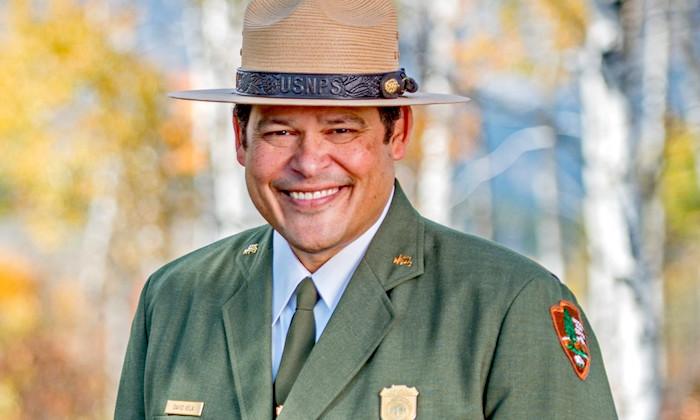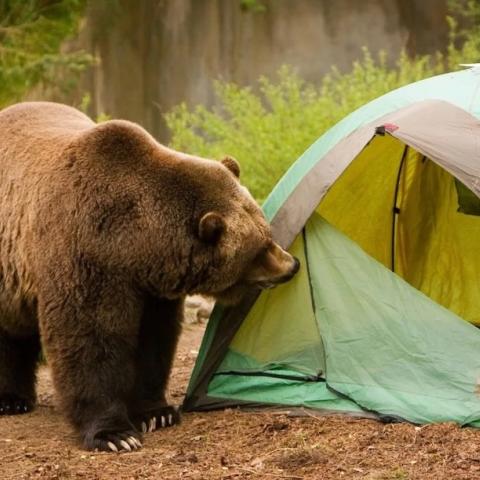
David Vela's qualifications to become director of the National Park Service have been called into question/NPS
President Trump's nominee to lead the National Park Service worked behind the scenes to see 40,000 acres of wilderness quality lands in Big Cypress National Preserve opened for off-road vehicles, was less than transparent in pushing through approvals for cell tower locations in Grand Teton National Park, and failed to protect park resources from overcrowding despite longstanding congressional directives to do so, according to an advocacy group.
"As it stumbles into its second century, our National Park System faces mounting challenges which call for a real leader with vision, rather than a pliant placeholder,” said Jeff Ruch, executive director of Public Employees for Environmental Responsibility. “PEER’s direct experience with Mr. (David) Vela gives us great pause about endorsing his nomination.”
PEER's release opposing Grand Teton Superintendent Vela's nomination to be the next Park Service director comes as the organization is concluding a Freedom of Information Act lawsuit it filed against Grand Teton for withholding information on its cell tower plans.
PEER's opposition stands out against approvals of the nomination from the governor of Wyoming, who has worked with Vela for the past four years; National Park Foundation President and CEO Will Shafroth; National Parks Conservation Association President and CEO Theresa Pierno; Larry Rockefeller, the grandson of John D. Rockefeller, Jr., and; Leslie Mattson, president of the Grand Teton National Park Foundation.
Specific concerns raised by PEER include:
* Vela's role, as then director of the Park Service's Southeast Region, to work with Pedro Ramos, at the time superintendent of Big Cypress, to try to persuade then-NPS Director Jon Jarvis to waive a section of the National Park Service's Management Policies pertaining to wilderness-quality landscapes so they could allow ORV use in 147,000 acres that were added to the preserve in 1996.
When Superintendent Ramos released the final version of that plan in November, it called for up to 130 miles of ORV trails, and as many as 650 ORV permits annually. Along the way to developing that plan, his critics allege that the superintendent and his staff went around Park Service Director Jon Jarvis' wishes and denied wilderness eligibility for 40,000 acres in the Addition section.
The specific section of the 2006 Management Policies states that, "[T]he National Park Service will take no action that would diminish the wilderness eligibility of an area possessing wilderness characteristics until the legislative process of wilderness designation has been completed. Until that time management decisions will be made in expectation of eventual wilderness designation.”
When Jarvis denied that waiver request, PEER maintains that "Ramos and Vela implemented a new strategy. If lands deemed eligible for wilderness stand in the way of their pending ORV decision, they would simply reanalyze the lands. They conducted a quick re-analysis. Vela submitted the re-analysis to the Director on April 20, 2010. Deputy Director Dan Wenk approved it on May 12, 2010."
At the time, Ramos told the Traveler that the reduction of "wilderness eligible" acres from more than 111,000 identified in 2009 to 47,067 acres was the result of park staff taking into consideration more than 17,000 comments submitted on the draft version of the lands management plan.
* Failure by Vela as Grand Teton's superintendent to properly take public comment on plans to approve the location of 11 cell towers in the park, a plan PEER calls "the largest cellular expansion in national park history."
PEER contends that Grand Teton in June 2017 issued a public scoping newsletter regarding a "Telecommunications Infrastructure Plan" that called for a fiber optic cable network and wireless telecommunications facilities that could be run all the way to the South Entrance of Yellowstone National Park. While the document solicited public comment, it did so without detailing the extent of the telecommunications facilities, PEER maintains. The group discovered that last December a real estate firm had landed a contract from Grand Teton to install 55 miles of fiber optic cable around the park, including to Flagg Ranch, Colter Bay, and Jackson Lake Lodge, along with 11 wireless communications facilities.
“Grand Teton is developing the largest wireless network in any national park, all behind closed doors,” Ruch said this past March, adding that the Interior Department's Office of the Inspector General had opened a park system-wide performance evaluation and financial audit of national park commercial wireless facilities in response to a PEER complaint in October 2017. “Grand Teton is the new poster child for how parks should not partner with telecom companies.”
* Failure by Vela to protect Grand Teton's natural resources from impacts of overcrowding. The National Parks and Recreation Act of 1978 specifically requires “visitor carrying capacities for all areas” of each park unit.
Superintendent Vela did not immediately respond to Traveler's request Tuesday for reaction to these charges.
At PEER, Ruch said he hoped the Senate Energy and Natural Resources Committee would scrutinize Vela's record before approving his nomination.
“We urge the committee to find out specifically what this nominee expects to accomplish if confirmed,” he said. “At this point in their history, our national parks need a shrewd game plan, not a pep rally.”




 Support Essential Coverage of Essential Places
Support Essential Coverage of Essential Places







Comments
Of course they do.
I think PEER has some good points to be examined.
Voting in 2018 and 2020 has never been more important than in anytime in history of our wild lands conservation..Vote!
Comments should not change how a wilderness is evaluated. This guy sounds like Zinke's buddy.
Well, you know that they were going to nominate someone who is 1. a putative Republican, and 2. someone who was no friend of Jarvis. Some of us are simply glad he nominated someone within the agency (versus another Fran Mainella-like failure or a previously-retired disaster (see: Dan Smith, Dave Mihalic).) In these times that counts as a win. Sigh.
My fear has been that if they nominated someone from within, that it would be someone malleable, someone with a weakness or baggage or some other handle that the Trumps and Zinkes could hold onto.
Vela is clearly a stooge of development interests. He is no friend of wilderness.
Being attacked by PEER is a badge of honor. Confirm him!!!